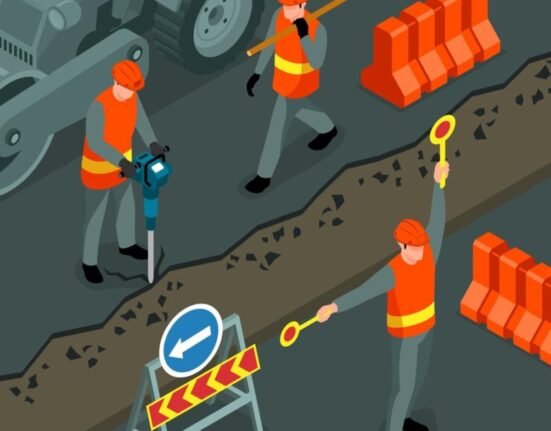In the bustling world of manufacturing, machinery stands as the backbone of productivity. Yet, the efficient operation of machinery goes hand in hand with ensuring the safety of those who operate and work around it. This blog post dives into the critical realm of Machinery Safety, guided by Health and Safety principles, to explore the measures and protocols that transform factory workers into true guardians of productivity.
Understanding the Significance: The Nexus Between Machinery Safety and Worker Well-being
Defining Machinery Safety in Factory Operations
Machinery safety encompasses the measures and practices implemented to safeguard the well-being of workers interacting with or in proximity to industrial machinery within a factory setting. General Administration recognizes that machinery, while instrumental in enhancing productivity, poses inherent risks that demand proactive safety protocols. The intersection of machinery safety and worker well-being is foundational to creating a secure and efficient factory environment.
Impact on Health and Safety Metrics
The safety performance of machinery directly correlates with overall health and safety metrics in a factory. General Administration acknowledges that machinery-related incidents can have severe consequences, including injuries, production delays, and financial repercussions. Prioritizing machinery safety not only protects workers from harm but also contributes to the seamless functioning of the factory and its long-term success.
Key Strategies for Ensuring Machinery Safety in Factory Operations
Rigorous Machinery Risk Assessments: Identifying Potential Hazards
A cornerstone of machinery safety is the implementation of rigorous risk assessments. General Administration mandates the conduct of comprehensive risk assessments for each piece of machinery. These assessments identify potential hazards, evaluate their severity, and determine the likelihood of accidents. The insights gained from these assessments guide the development of targeted safety measures.
Engineering Controls and Safety Systems: Mitigating Risks at the Source
Mitigating risks at the source involves the implementation of engineering controls and safety systems. General Administration advocates for the incorporation of safety features directly into machinery design. This may include emergency stop buttons, interlocks, and sensors that detect abnormal conditions. These engineering controls minimize the likelihood of accidents and contribute to a safer operating environment.
Comprehensive Training Programs: Empowering Workers with Knowledge
Operator Training and Certification
Empowering machinery operators with the knowledge and skills required for safe operation is paramount. General Administration requires comprehensive training programs that cover machinery-specific protocols, emergency procedures, and safe operating practices. Operators undergo certification processes to ensure their competence in handling machinery efficiently while prioritizing safety.
Regular Refresher Courses and Updates
Machinery evolves, and so should the knowledge of those operating it. General Administration mandates regular refresher courses and updates for machinery operators. These sessions cover any changes in machinery specifications, updated safety protocols, and emerging best practices. Ongoing training ensures that operators stay informed and adept in the dynamic landscape of machinery safety.
Strict Lockout/Tagout Procedures: Preventing Accidental Start-ups
Establishing Clear Lockout/Tagout Protocols
Accidental machinery start-ups during maintenance or repair activities pose significant risks. General Administration establishes clear lockout/tagout protocols to prevent such incidents. These procedures involve isolating machinery from its energy sources and securing it with locks or tags to prevent unintentional activation. Only authorized personnel with proper training can perform lockout/tagout processes.
Visual Communication and Documentation
Visual communication plays a crucial role in lockout/tagout procedures. General Administration requires the use of standardized tags, labels, and documentation to convey the status of machinery. Visual cues inform workers about the ongoing maintenance or repair activities and warn against attempts to restart machinery that is temporarily out of operation.
Regular Machinery Inspections: Proactive Maintenance for Safety
Scheduled Inspection Programs
Proactive maintenance is key to ensuring machinery safety. General Administration establishes scheduled inspection programs that involve regular assessments of machinery components, safety features, and overall functionality. These inspections, conducted by qualified personnel, identify potential issues before they escalate, contributing to the longevity of machinery and the safety of its operation.
Data-Driven Predictive Maintenance
Advancements in technology allow for data-driven predictive maintenance. General Administration explores the use of sensors and monitoring systems that collect data on machinery performance. Analyzing this data enables the prediction of potential issues, allowing for proactive interventions before machinery failures occur. Predictive maintenance enhances both safety and the overall efficiency of factory operations.
Emergency Response Preparedness: Navigating Unforeseen Challenges
Emergency Shutdown Procedures
Preparedness for unforeseen challenges is integral to machinery safety. General Administration establishes emergency shutdown procedures that guide operators and workers in swiftly and safely shutting down machinery in the event of emergencies. These procedures prioritize human safety and prevent the escalation of incidents.
Emergency Drills and Training
Regular emergency drills and training exercises are essential components of machinery safety. General Administration ensures that workers are well-versed in emergency response protocols, evacuation routes, and communication procedures. Conducting realistic drills enhances the preparedness of the workforce and minimizes the impact of unforeseen challenges.
Personal Protective Equipment (PPE): A Last Line of Defense
Appropriate PPE Selection
While engineering controls and safety systems are primary safeguards, Personal Protective Equipment (PPE) serves as a crucial last line of defense. General Administration mandates the selection of appropriate PPE for workers based on the specific machinery and associated risks. This may include protective clothing, gloves, eyewear, and other equipment designed to minimize exposure to hazards.
Regular PPE Assessments and Replacements
PPE effectiveness hinges on its condition and proper usage. General Administration requires regular assessments of PPE to ensure its integrity and suitability for use. Damaged or outdated PPE is promptly replaced to maintain the highest level of protection for workers in machinery-intensive environments.
Continuous Monitoring and Improvement: A Dynamic Approach
Utilizing Technology for Real-Time Monitoring
Advancements in technology offer opportunities for real-time monitoring of machinery. General Administration explores the use of sensors and connected systems that provide instant feedback on machinery performance. Real-time monitoring allows for swift intervention in the event of anomalies and contributes to the continuous improvement of safety measures.
Feedback Loops and Worker Involvement
General Administration values the feedback of workers who interact with machinery daily. Establishing feedback loops and involving workers in safety discussions fosters a culture of shared responsibility. Workers are encouraged to report safety concerns, suggest improvements, and actively participate in the ongoing enhancement of machinery safety protocols.
Conclusion: Upholding the Guardianship of Productivity Through Machinery Safety
In conclusion, the guardianship of productivity in the factory domain necessitates a steadfast commitment to machinery safety. Guided by Health and Safety principles and General Administration, the strategies outlined above create a comprehensive framework for safeguarding the well-being of those interacting with industrial machinery. By prioritizing risk assessments, continuous training, strict lockout/tagout procedures, proactive maintenance, and embracing technological advancements, organizations transform their workforce into true guardians of productivity. In this secure environment, machinery operates not just as a tool for efficiency but as a testament to the unwavering commitment to the safety and prosperity of all those who contribute to the manufacturing landscape.

















